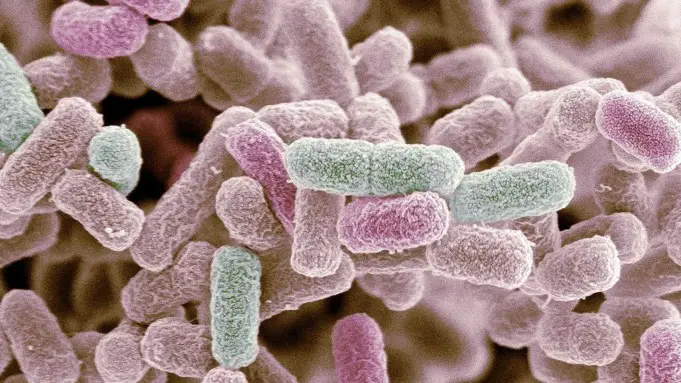Hemorrhagic colitis is an inflammation of the stomach and the large intestine. It is caused by a strain type of Escherichia coli, a gram-negative bacterium.
This bacterium is typically found in the large intestine, and fortunately, it causes no harm, but there are strains (Escherichia coli Hemorrhagic colitis) which cause infection.
This strain of bacteria produces a toxin called Shiga toxin. This toxin causes bloody diarrhoea and other abdominal complications. The Shiga toxins cling and cause damage to the lining of the large intestine. If these toxins enter the bloodstream, they can severely affect other organs like the kidney.
The bacterium that causes this illness is usually gotten from contaminated water, unpasteurized milk or juice, contaminated ground beef. Other symptoms may include abdominal cramps and diarrhoea that may be bloody.
The diagnosis is based on a doctor’s evaluation and the results of stool tests. Preventive measures include thorough cooking of meat and thorough washing of hands. Treatment involves drinking plenty of fluids.
Hemorrhagic colitis cuts across all ages and can infect anyone, but it is found to be most common in children and older people. Although there is much strain of the Escherichia coli, the most common strain is the E. Coli O157: H7. This bacterium is also believed to naturally occur in intestines of 1% of healthy cattle.
One can be infected by drinking contaminated water, drinking unpasteurized juice or milk, eating undercooked ground beef contaminated with cow manure. This infection is contagious; therefore, human to human transmission is possible.
It can also be transmitted from children’s diapers to other people. Another source of infection is poorly chlorinated water at recreational water parks.
Symptoms of Hemorrhagic Colitis
- Severe abdominal cramps
- Watery diarrhoea (this may become bloody in 24hrs) which lasts for about 1-8 days
- Low-grade fever
- Vomiting
- Weakness
- Fatigue
- Dark coloured urine
Studies have shown that 5% to 10% of people who have hemorrhagic colitis develop complications. Such complication is referred to as Hemolytic-uremic.
Its symptoms include weakness, fatigue, pale skin colour. These are due to the low red blood count, also known as anaemia.
Anaemia is as a result of the destruction of red blood cells (hemolytic anaemia). Anaemia is also caused by a low platelet count (thrombocytopenia).
Some people with the hemolytic-uremic syndrome also develop complications which can lead to kidney failure, nerve or brain damage, such as seizures or strokes.
Hemolytic-uremic syndrome typically develops in the second week of illness, sometimes followed by a gradual intense fever. Hemolytic-uremic syndrome is more likely to occur in children under age five years and people over the age of 60.
Even without hemolytic-uremic syndrome and its complications, hemorrhagic colitis may cause death in older people. Research also shows that not all people infected experience all the symptoms mentioned above.
There is a clinical spectrum of the Hemorrhagic colitis ranging from asymptomatic carriers to self-resolving non-bloody diarrhoea cases to severe cases complicated by the hemolytic-uremic syndrome.
Diagnosis
When patients report their case of bloody diarrhoea, health care workers usually suspect Hemorrhagic colitis. Therefore, to make a proper diagnosis, the doctor will have the stool of the patient tested to see if it possesses strains of Escherichia coli or the toxins they produce.
If the doctor suspects other diseases as the underlying cause of bloody diarrhoea, the patient is tested for sigmoidoscopy.
Treatment
There is no known method to stop Hemorrhagic colitis, but the essential part of its treatment is taking a lot of fluids, and in some cases, blood transfusion. This is because, during the ailment, the body loses so much fluid. Therefore, the fluids have to be replaced.
The patient can take the fluid orally, or the doctor can administer fluid to the body through the vein (intravenously).
Antibiotics are not given for hemorrhagic colitis suspected to be caused by E. coli because they do not lessen symptoms, they do not prevent the spread of the infection, and they increase the risk of developing the hemolytic-uremic syndrome. The illness just goes away on its own.
Notwithstanding, People who develop other hemorrhagic colitis-related complications will need intensive care and supervision in the hospital and may need kidney dialysis and other specific treatment.
Prevention
- It is important that meat is thoroughly cooked. Ground beef can still be contaminated therefore it is advised to be cooked to an internal temperature of 160° F (71° C)
- Proper hygiene
- Taking only pasteurized milk, juice, cheese and other dairy products
- Wash your fruits and vegetables thoroughly before consumption
- Improvement of meat processing procedures
- Proper disposal of the stool of infected people.
- Proper handwashing and usage of an alcohol-based hand drop to limit the spread of infection
- Children who no longer have symptoms of hemorrhagic colitis should have at least two negative stool tests before allowed to go back to school
If there are outbreaks of bloody diarrhoea, it is advised to report to the public health authorities. Intervention can help limit the spread of the infection to other people.












